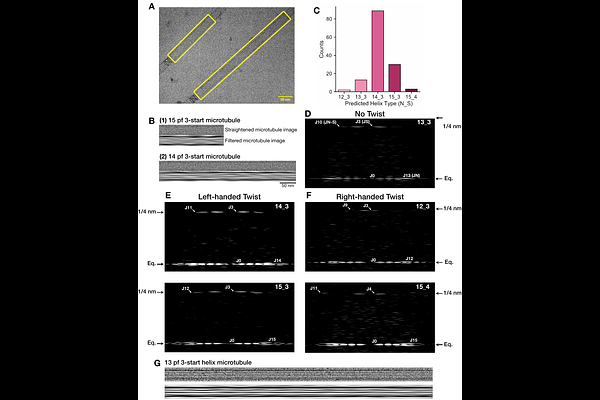Conformational flexibility of tubulin dimers regulates the transitions of microtubule dynamic instability

Conformational flexibility of tubulin dimers regulates the transitions of microtubule dynamic instability
Shred, M.; Vangos, N. E.; Bayne, A. N.; Tetlalmatzi, S. C.; Peng, W.; Trempe, J.-F.; Sept, D.; Cianfrocco, M. A.; Brouhard, G.
AbstractMicrotubules are highly conserved polymers of {beta}-tubulin dimers that undergo dynamic instability. While dynamic instability is conserved across eukaryotes, many of its associated conformational changes, like lattice compaction and twist, are not. Tubulin dimers sample multiple conformations in solution and undergo conformational changes during polymerization; the rate and extent of these changes describes their \"conformational flexibility.\" Here, we investigate the relationship between the conformational flexibility of tubulins and the dynamic phenotypes of the microtubules they produce with a comparative study of Drosophila melanogaster tubulin (Dm-Tb) and Bos taurus brain tubulin (Bt-Tb). While these tubulins share high sequence and structural similarity, their microtubules display divergent dynamic phenotypes in vitro, with altered transition frequencies between phases of growth and shrinkage. Dm-Tb microtubules showed drastically longer lifetimes, lower barriers to nucleation, and a high rescue frequency, while maintaining a similar growth rate to Bt-Tb microtubules. 3D reconstruction of mature Dm-Tb microtubules showed high structural conservation with mammalian microtubules. However, when we performed molecular dynamics simulations of free tubulin dimers, we found Dm-Tb to be more rigid and adopt fewer conformational states than Bt-Tb. Biochemical characterizations experimentally confirmed this finding, leading us to hypothesize that differences in the conformational flexibility of tubulins may tune the frequency of transitions between the dynamic phases of microtubules, thereby altering their stability and overall dynamic phenotypes.